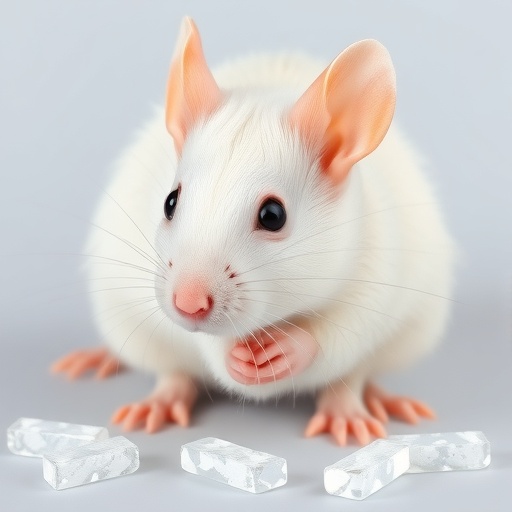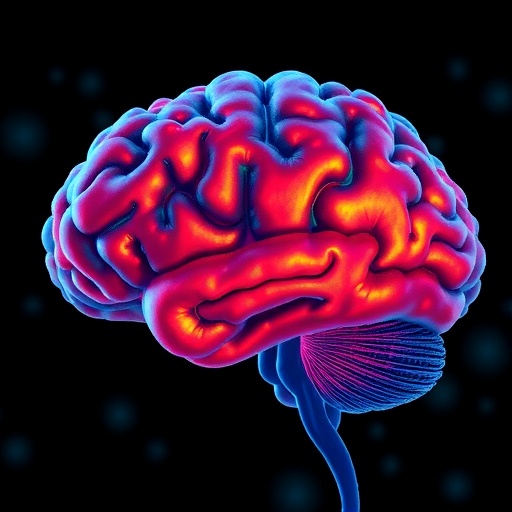
Emerging insights into the biology of glioma stem cells (GSCs) reveal a complex interplay of phenotypic variations that significantly influence the efficacy of therapeutic strategies. A recent study authored by Tian et al. investigates these variations, shedding light on the regulatory mechanisms underlying GSC behavior and their implications for future cancer treatments. The prevalence of gliomas as a formidable form of brain cancer necessitates a deeper understanding of GSCs, as their unique properties contribute to tumor recurrence and resistance to conventional therapies.
The research highlights that glioma stem cells are not homogeneous. Instead, they exhibit diverse phenotypes that can adapt to varying microenvironments. These adaptations allow GSCs to thrive despite harsh conditions within the tumor ecosystem, indicating that their plasticity is a critical survival mechanism. By delineating the factors that govern this phenotypic diversity, researchers aim to open new avenues for more effective cancer therapies.
One of the primary findings of the study is the role of specific signaling pathways in modulating GSC characteristics. Notably, the Notch, Wnt, and Hedgehog pathways, known for their involvement in stem cell maintenance, were identified as crucial players in determining the fate of GSCs. By understanding which pathways are most influential in the development of stemness and tumorigenicity, targeted interventions can be developed to thwart the progression of glioma.
The study also investigates the molecular markers associated with the diverse phenotypes of GSCs. Identifying these markers could provide valuable diagnostic and prognostic information, allowing for more personalized treatment plans tailored to individual patient profiles. Furthermore, it offers the potential for monitoring treatment response, as shifts in phenotype may indicate changes in the tumor’s biology.
Tian et al. detail the interactions between GSCs and their microenvironment, which play a crucial role in their phenotype and behavior. The tumor microenvironment is rich with various cell types, extracellular matrices, and soluble factors that can either promote or inhibit GSC characteristics. This interaction underlines the importance of considering the tumor microenvironment when developing therapeutic strategies aimed at eradicating gliomas.
Intriguingly, the study presents evidence of how hypoxia influences the phenotypic variations in GSCs. Oxygen deprivation is a common feature of solid tumors, and GSCs have developed mechanisms to adapt to such stress. This adaptation not only enhances their survival but also increases their aggressiveness. Understanding how GSCs respond to hypoxic conditions could reveal targets for therapeutic intervention that exploit these vulnerabilities.
On the therapeutic front, the insights gained from this research could lead to the development of combination therapies that address the diverse phenotypes of GSCs. Monotherapies may be insufficient, given the adaptive nature of these cells. Instead, integrating treatments that target multiple pathways involved in GSC biology may improve patient outcomes and reduce the likelihood of relapse.
The research also underscores the significance of epigenetic modifications in shaping the phenotypic landscape of GSCs. Epigenetic alterations can lead to stable changes in gene expression without altering the DNA sequence, thereby influencing the behavior of GSCs. By targeting these modifications, new therapeutic strategies could emerge, potentially reprogramming GSCs to a less malignant state.
As glioma continues to represent a substantial challenge in oncology, the potential for translating these findings into clinical practice could impact patient care profoundly. The advent of precision medicine necessitates a comprehensive understanding of the biological underpinnings of cancer, enabling oncologists to design more effective treatment regimens.
This study serves as a hopeful reminder that progress is possible in the fight against gliomas. By unraveling the complexities of glioma stem cells and their phenotypic variations, researchers are charting a path toward innovative therapies that may one day lead to prolonged survival and improved quality of life for those affected by this devastating disease.
While glioma stem cells represent a burgeoning frontier in cancer research, the pathway towards effective therapies remains fraught with challenges. Continued exploration is essential for translating laboratory discoveries into clinical applications. As scientists work tirelessly to decipher the nuances of GSC biology, collaboration across disciplines will be paramount in tackling the multifaceted nature of gliomas.
In conclusion, the study by Tian et al. adds a crucial layer to our understanding of glioma stem cells and their phenotypic diversity. The intricate relationship between cellular mechanisms and the tumor microenvironment emphasizes the need for a holistic approach in developing new therapeutic strategies. As research continues to evolve, the insights gained could pave the way for breakthroughs that transform treatment paradigms in neuro-oncology.
With an increased understanding of GSCs, the vision of personalized medicine becomes more tangible. Future studies should focus on validating these findings in clinical settings, establishing robust biomarkers, and enhancing therapeutic interventions to improve patient outcomes. The journey is long, but the potential rewards are enormous, promising hope for the future of glioma treatment.
The implications of this research extend far beyond gliomas, as similar mechanisms may be at play in various other cancers. By illuminating the complexities of tumor-initiating cells across different malignancies, researchers may forge a unified approach in combatting the broader landscape of cancer. This ongoing battle against cancer hinges on our ability to adapt and innovate, drawing from the depths of scientific inquiry to inform clinical practice.
In summary, the study conducted by Tian et al. is a testament to the resilience of scientific exploration in the face of formidable challenges. As researchers continue to delve deeper into the biology of glioma stem cells, the hope is that this knowledge will translate into actionable strategies that not only confront gliomas but also revolutionize cancer therapy as a whole.
Subject of Research: Glioma stem cells and their phenotypic variations.
Article Title: Phenotypic variations in glioma stem cells: regulatory mechanisms and implications for therapeutic strategies.
Article References:
Tian, G., Song, Y., Zhang, Y. et al. Phenotypic variations in glioma stem cells: regulatory mechanisms and implications for therapeutic strategies.
J Transl Med 23, 984 (2025). https://doi.org/10.1186/s12967-025-07034-9
Image Credits: AI Generated
DOI: 10.1186/s12967-025-07034-9
Keywords: Glioma stem cells, phenotypic variations, therapeutic strategies, tumor microenvironment, signaling pathways, epigenetic modifications.
Tags: brain cancer treatment advancementsfuture directions in glioma researchglioma stem cells variationsmicroenvironment adaptations of GSCsNotch Wnt Hedgehog pathways in GSCsphenotypic diversity in cancer stem cellsplasticity of glioma stem cellsregulatory mechanisms in glioma biologyresistance to conventional cancer therapiessignaling pathways in glioma stem cellstherapeutic strategies for gliomastumor recurrence in brain cancer




